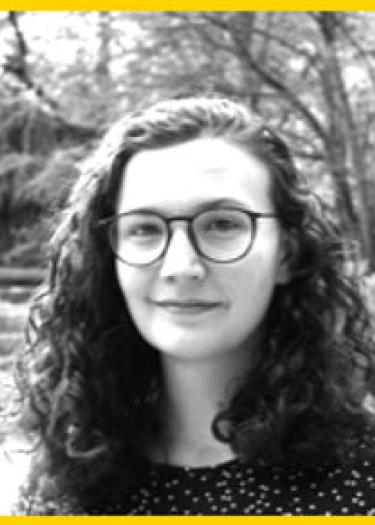Core Facility – IDIP Infectious Diseases Imaging Platform
The Infectious Diseases Imaging Platform (IDIP) is a high-end microscopy core facility at the Center for Integrative Infectious Disease Research (CIID), University Hospital Heidelberg. IDIP provides cutting-edge imaging technologies under BSL-2 and BSL-3 conditions to support research on host-pathogen interactions across a wide range of spatiotemporal scales—from molecular dynamics to whole-organ imaging in living systems. The platform combines advanced microscopy with quantitative analysis to study rare and stochastic molecular events critical for understanding infectious processes.
The IDIP consists of 14 interconnected microscopy, tissue culture, and analysis rooms within over 250 m² of biosafety infrastructure and supports both basic and translational research through collaborative projects. We welcome new users and offer training, access to our instrumentation, and project-specific consultation. For more detailed information, please visit the official IDIP website:
Fees & Important Notes
To keep the IDIP infrastructure operational it is necessary to raise necessary funds. This is partly done through user fees and partly through institutional and third party funding. Funds to cover usage fees can be requested as part of grant proposals to the DFG, the BMBF and the European Commission. Guidelines for requesting usage fees have been published by the DFG.
Different user fees apply for “internal”, “external” and “company” users. The user fees for internal users cover the specific, project-related, instrument operating costs, adaptations, upgrades and replacements, instrument-related consumables as well as project-specific staff costs within the framework of the applicable third-party funding agency guidelines. This is in accordance with the DFG guidelines for Research Infrastructure for Advanced Light Microscopy. Indirect costs (electricity, cleaning, general room maintenance, administration, etc.), routine instrument maintenance, instrument depreciation and costs of IDIP staff connected to routine infrastructure maintenance and VAT are not covered by fees for internal users. The fee for external users includes full operating and staff costs with 19% VAT, while fees for company users include indirect costs (40% overhead) and depreciation costs in addition. More details about the pricing and user fee system can be found in our User Fees Overview.
Who can become a user?
Internal Users
Primary IDIP users are members of the Center for Integrative Infectious Disease Research (CIID), Center for Infectious Diseases of the University Hospital Heidelberg and other members of Heidelberg University campus that need microscopy infrastructure under enhanced biosafety conditions. Members of organisations which co-finance IDIP infrastructure, such as the Heidelberg University Field of Focus 1 network and the German Center for Infection Research (Deutsches Zentrum für Infektionsforschung, DZIF), are also considered as “internal users”. A project can be conducted in IDIP if it fulfilles at least ONE of the following criteria:
- The project requires BSL2/BSL3 containment
- The project is in the field of infectious diseases research
- There is no comparable instrumentation in other facilities on the campus
External and Company Users
The IDIP infrastructure is also open to “external users”. They include interested investigators from other academic research institutions and collaborators from industrial partners.
How to become a user?
Prerequisites for access to IDIP:
- Necessary biosafety training needs to be accomplished (level 2 or 3 depending on the pathogen and experimental setup used). For internal users the training is done by the respective PI and for the external users by IDIP staff.
- Experiments with primary human or animal material that require evaluation by an Ethics committee can only be conducted after a respective Ethics vote has been obtained by the responsible Ethics Committee (in most cases the Ethics Committee of the University Hospital Heidelberg).
- IDIP registration needs to be completed
- Please also familiarize yourself with our rules and regulations
Services & Equipment
Services
The Infectious Diseases Imaging Platform (IDIP) provides advanced microscopy infrastructure under enhanced biosafety conditions (BSL-2 and BSL-3) to support infectious disease research. IDIP offers a comprehensive range of services, including:
- Microscopy Infrastructure: Access to state-of-the-art imaging technologies for studies ranging from molecular to whole-organism levels.
- Project Consultation: Expert advice on experimental design, instrument selection, and biosafety considerations.
- Training and Education: Comprehensive training programs for users to ensure proficient and safe operation of equipment.
- Data Acquisition and Analysis: Support in image acquisition, processing, and quantitative analysis, including assistance with software tools and automation workflows.
- Collaborative Research: Facilitation of interdisciplinary projects, integrating microscopy data with other research modalities.
Equipment
Biosafety Level 2:
- Leica SP8 DLS Laser Scanning Confocal SPIM
- Leica Correlative Light Electron Microscopy workflow equipment (cryoCLEM)
- Abberior Instruments STED/FLIM
- PerkinElmer Spinning Disc Confocal
- VisitronSystems Orbital-TIRF
- ZEISS Airyscan 2 LSM900
- CREST spinning disc with Nikon Ti2
- MMI CellCut & CellManipulation
- Image Analysis Workstations
Biosafety Level 3:
- LaVision Biotec 2-Photon microscope
- Leica THUNDER
- CSU-W1 with Nikon Ti2 Spinning Disc Confocal
- Luxendo InVi-SPIM
- Nikon TiE
- BD FACS Aria
Team
Table
Dr. Vibor Laketa +49 6221 56-34410 | |
Dr. Sylvia Olberg +49 6221 56-4789 | |
Dr. Severina Klaus +49 6221 56-4789 | |
Dr. Alessandro Ulivi +49 6221 56-4789 | |
Dr. Jessica Kehrer +49 6221 56-32241 |
Contact
Infectious Diseases Imaging Platfrom (IDIP)
Center for Integrative Infectious Diseases Research (CIID)
Im Neuenheimer Feld 344,
69120 Heidelberg,
Germany
Dr. Vibor Laketa
Tel: +49 6221 56 34410
Email: vibor.laketa@med.uni-heidelberg.de
Selected publications
Table
An extensive list of our publications can be found here:
Further Information on the IDIP
Short video: Interview with the Head of IDIP
Long video: Interview and IDIP tour
Funding ressources
This Core Facility has received funding by the Federal Ministry of Research, Technology, and Space (BMFTR) and the Ministry of Science Baden-Württemberg within the framework of the Excellence Strategy of the Federal and State Governments of Germany.







